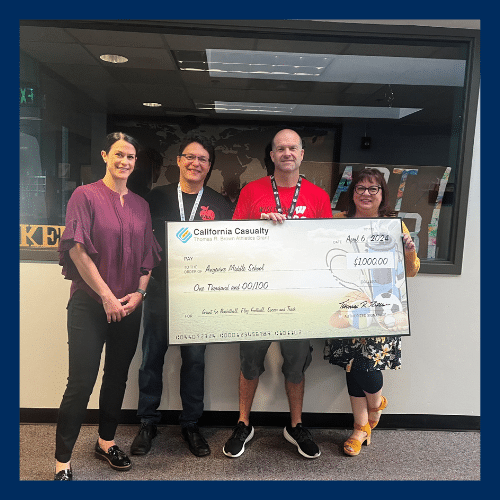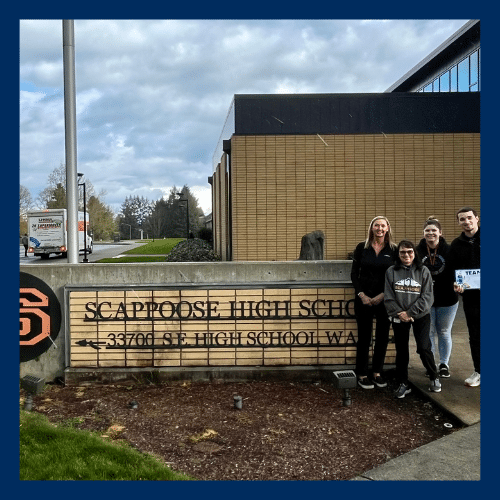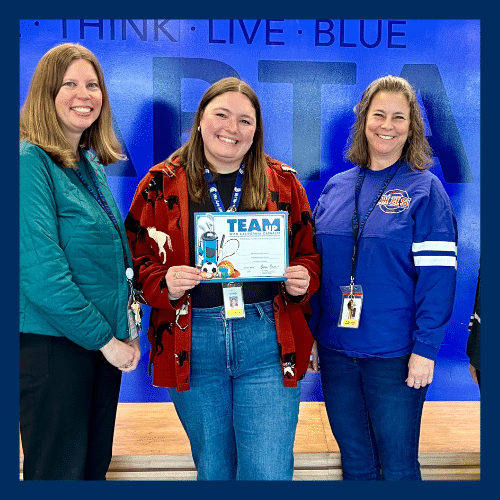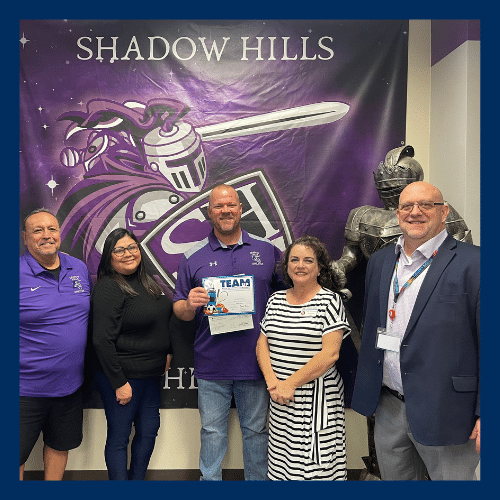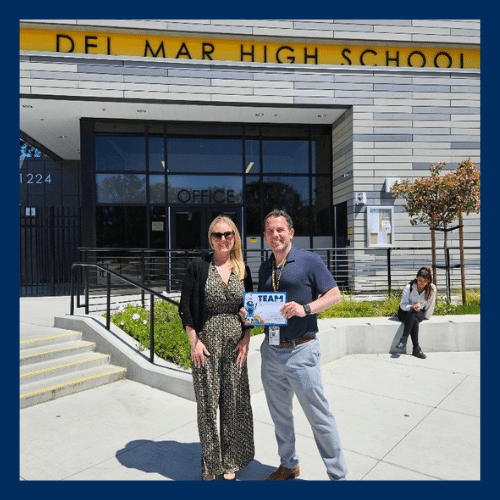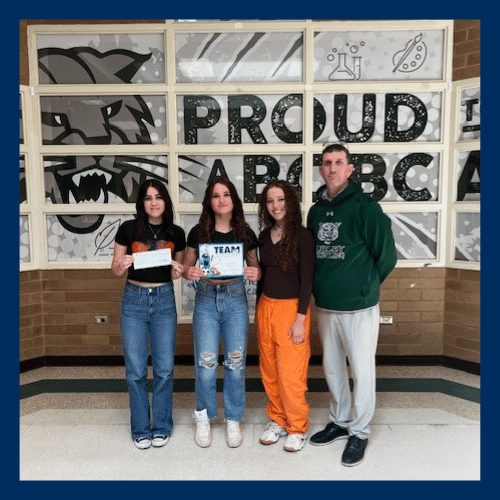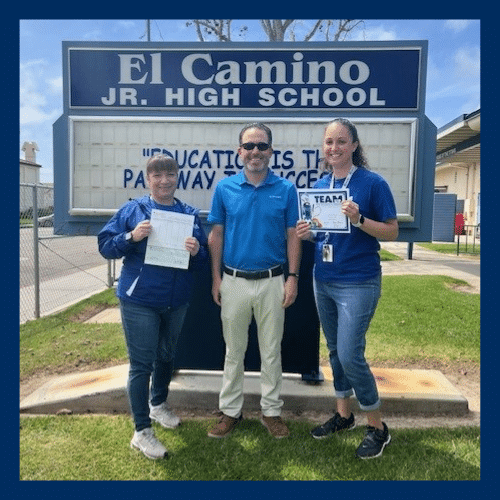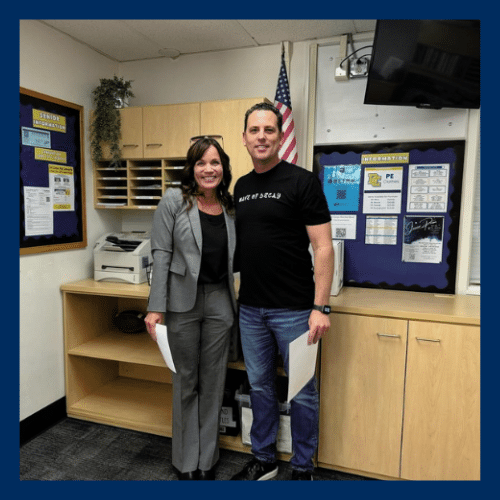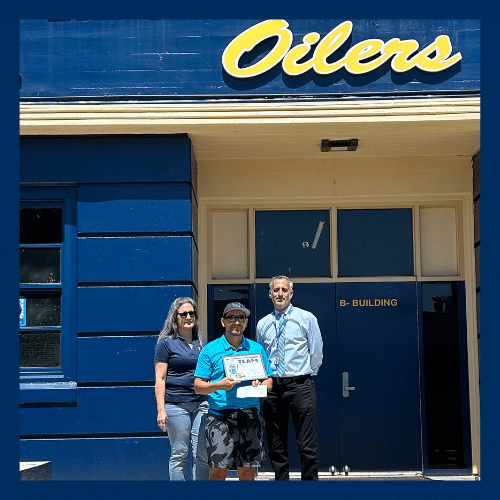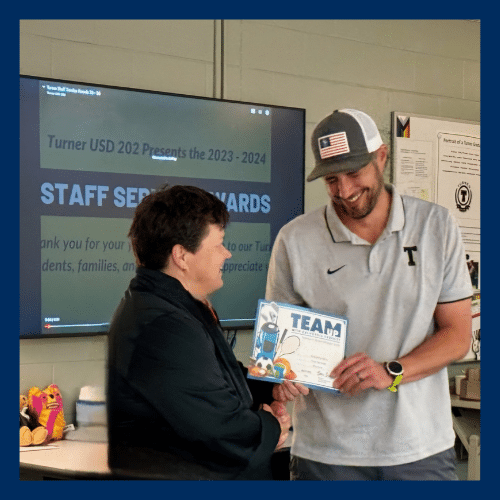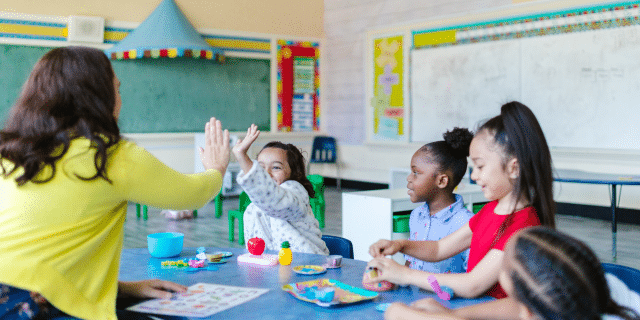
by California Casualty | Educators |
The countdown to summer is on, and your students can feel it. But before the final bell rings, there’s still learning to do and a classroom to keep on track. Year-end chaos doesn’t have to rule the day. With a few clever classroom management tricks, you can keep your students focused, your sanity intact, and maybe even end the year with a few laughs. So, how do you wrap things up without unraveling? Let’s dive into some fun and effective year-end strategies that make the finish line feel just as rewarding as the start.
Stay Consistent with Behavior Expectations
The end of the school year brings special events, assemblies, and field trips that can throw off your regular schedule. While flexibility is important, maintaining consistency with your classroom expectations is key. Students, especially younger ones, find comfort in routine. Continue using your classroom signals, reinforcement systems, tools and apps, and behavior expectations just as you have all year. It might be tempting to ease up, but consistency helps students feel secure and keeps the classroom running smoothly. Reinforce positive behavior with praise or small incentives and apply logical consequences when needed.
Ease Up on the Curriculum (But Keep It Meaningful)
By now, the heavy lifting of academic instruction is complete. Use the final weeks to reinforce what students have learned while allowing space for creativity and fun. Consider interest-based research projects that allow students to explore topics they’re passionate about. These not only keep students engaged but give them ownership of their learning. Let your budding marine biologist create a poster about sharks or have your history buff do a skit about a famous figure. Make the extra minutes count with sponge activities. You’re still teaching — just with more flexibility.
Keep It Interesting with Creative Activities
When attention spans are short, engaging activities are your best friend. Incorporate group work, hands-on projects, and learning games. Older students might enjoy real-world skill building like budgeting, resume writing, or mock interviews. For younger students, try a classroom economy where they earn play money for positive behaviors and redeem it at an end-of-year sale. Offer choices in projects to boost motivation. Something as simple as switching from notebook paper to butcher paper for taking notes can spark renewed interest. You can even turn biography projects into interactive presentations — students decorate a poster with cut-outs representing their person, then cut a hole in it and present in character.
Create Calm with Mindfulness and Movement
As excitement builds, a few quiet moments can go a long way. Set the tone with mindfulness techniques like deep breathing, guided imagery, or soft background music. These tools are especially helpful after lunch or recess when students need help transitioning back to learning. Add in brain breaks, stretching sessions, or short walks to keep energy flowing in a positive direction. You’ll be surprised how a few minutes of calm can re-center the whole class.
Tackle Specific Year-End Challenges
Excessive talking? Acknowledge the excitement and give students a timed break to chat — then bring them back to task. Incomplete work? Consider whether the assignment still serves a learning purpose. If not, try offering a creative alternative — like writing a script for a Reader’s Theater performance instead of a traditional book report. Low motivation? Set small, daily goals and celebrate their completion with simple rewards like stickers, certificates, or a few extra minutes of recess.
Use Rewards Strategically
The right incentive can make all the difference. You don’t need to spend a lot — students love extra recess, a snack, and time outside. One fun idea is to assign two “secret agents” each day to watch for a specific behavior, like teamwork or staying on task. At the end of the day, the agents share who stood out and those students receive a reward. It builds community while reinforcing expectations. You can also try bubble rewards: place a small bottle of bubbles on each desk in the morning, and students who follow the rules get to blow them at the end of the day.
Reflect and Celebrate
Take time to honor the year you’ve spent together. Invite students to write memories from the year, then read them aloud as a class guessing game. Gratitude journals or letters to next year’s students can help your class process their growth and reflect on positive experiences. Not only does it provide closure, but it also promotes gratitude and emotional literacy.
Get Organized with Student Help
Take advantage of your eager helpers! Assign students to help organize the class library, check supplies, or make sure all the pieces are in the board games. Turn it into a challenge — who can find the most missing crayons? Designate a “cleaning crew” for bulletin boards or storage areas. Not only are you prepping for next year, but you’re also teaching responsibility and teamwork.
Don’t Forget Your Own Well-being
Finally, take care of yourself. The end of the year can be emotionally and physically draining. Prioritize rest, hydration, and moments of quiet throughout your day. Prepare your summer reading list and plan your time off. A calm and grounded teacher sets the tone for a smooth classroom.
This article is furnished by California Casualty, providing auto and home insurance to educators, law enforcement officers, firefighters, and nurses. Get a quote at 1.866.704.8614 or www.calcas.com.
by California Casualty | Educators, In Your Community, News |
Congratulations to all of the recipients of the 2024 California Casualty Music & Arts Grants! Our field team had the privilege to connect both in-person and virtually with many of the grant recipients to present them with a check for $250 to put towards supporting their schools’ music or arts program.
Check out the awardee spotlights and see the full list of recipients below.
Hannah Hurst – 2024 Music & Arts Grant Awardee Spotlight

Deerfield Elementary School, Lawrence, Kansas
Hannah Hurst, Kansas National Education Association Member
Deerfield Elementary Art Program
Hannah Hurst, art teacher and Kansas National Education Association Member, applied for a Music & Arts Grant to request funding for the Deerfield Elementary Art Program. Deerfield Elementary School is within the Lawrence Public Schools in Lawrence, Kansas and is considered a Title 1 school, with 28% of the student population considered economically disadvantaged.
Hannah wrote in her application, “My elementary art program lost 20% of its funding last school year due to a district wide budget crisis. Our budget now only allocates $3.00 per student for art supplies. This grant would help purchase consumable supplies for over 500 students.”
Jolie Spence, Sr. Account Development Manager with California Casualty, located in the greater Denver area, presented Hannah with the grant during a staff meeting via Zoom. Hannah remarked after receiving the grant “I am just thrilled to be able to provide my students with the supplies they need to have the very best art education!”
Photo: Hannah Hurst, Awardee
Molly Curro – 2024 Music & Arts Grant Awardee Spotlight

Columbian Elementary School
Molly Curro, Colorado Education Association Member
Columbian Elementary Art Program
Molly Curro, music teacher and Colorado Education Association member, heard about the Music & Arts Grant from her local union, Pueblo Education Association (PEA). She knew that her school Columbian Elementary, located in a high poverty community, would greatly benefit from the grant.
Molly wrote in her application that the grant would go towards a Piano Lab that would enhance music education through hands-on learning, promote creativity and collaboration among students and in turn enrich the school’s overall arts program.
Jolie Spence, Sr. Account Development Manager with California Casualty located in the greater Denver area, was excited to award this grant to Molly and Columbian Elementary. She along with Mike Maes (PEA President), Justina Carter (PEA Vice President), Jimmie Pool, Columbian Elementary Principal and colleagues presented the grant to Molly.
Photo L-R: Jimmie Pool, Columbian Elementary Principal, Molly Curro, Awardee, Mike Maes, Pueblo Education Association President, Jolie Spence, Sr. Account Development Manager
Kendall Wightman – 2024 Music & Arts Grant Awardee Spotlight
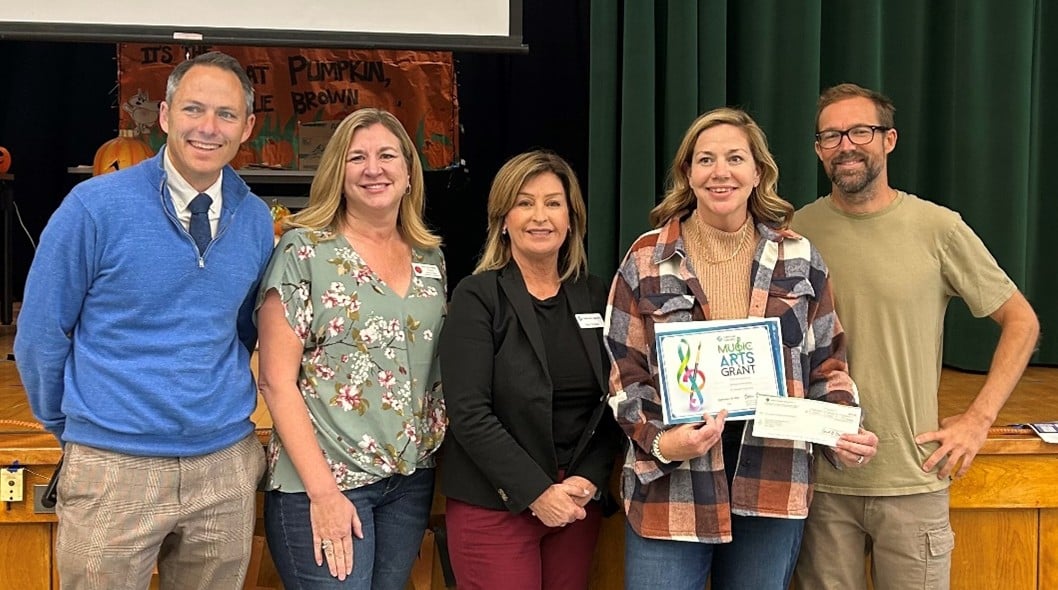
Elmhurst Elementary School, Ventura, California
Kendall Wightman, Teacher and California Teachers Association Member
Elmhurst Elementary Art Program
Kendall Wightman, Art Teacher and California Teachers Association Member, heard about the California Casualty Music and Arts Grant from her local union representative. Kendall shared in her application, “with budget cuts over the years, the school no longer receives the simplest of materials such as Sharpie markers for our students.”
Jana Charles, Sr. Account Development Manager, working located in the Southern California Los Angeles area, along with the Music & Arts Grant committee selected Kendall’s application to receive. Jana was due to surprise Kendall with the grant, however plans changed, “this was my most unforgettable presentation. On November 6th while in route to Elmhurst ES, I received a call from the school secretary advising me to turn back immediately, as schools across the district were dismissing staff and shutting down operations due to the wildfires in Ventura County. Despite the chaos, one week later I had the privilege of attending their November 13th staff meeting to surprise CTA member, Kendal Wightman, with the grant. This group was the most humble and enthusiastic group of individuals.” Although the Mountain Fire was destructive, burning over 20,000 acres, damaging and destroying hundreds of building, luckily few individuals were injured.
Photo L-R: Bret Klopfenstein, Principal (and happy CalCas customer), Sarah McLaughlin, President of Ventura Unified Education Association (another happy CalCas customer), Jana Charles, Kendall Wightman, Awardee, and Ryan Oast, Ventura Unified Education Association site representative
Katrina Snow – 2024 Music & Arts Grant Awardee Spotlight
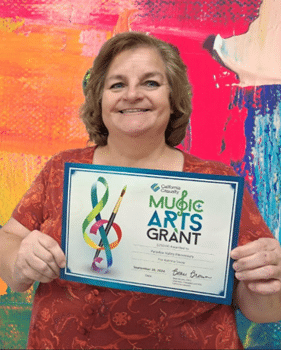
Paradise Valley Elementary, Casper, Wyoming
Katrina Snow, Art Teacher and Wyoming Education Association Member
Paradise Valley Elementary Lunar New Year Program
Paradise Elementary School in Casper, Wyoming services a dual language student population of both Mandarin Chinese and English. Each year the art, music and physical education teachers fund and host an all-school student art show that centers around the Zodiac animal of the Lunar New Year.
Katrina Snow, Art Teacher and Wyoming Education Association member, was excited to learn about the grant, writing that if awarded a grant, funds would go to props, costumes and other supplies so each student could make at least 2 projects to celebrate the Lunar New Year’s Year of the Snake.
Jolie Spence, Sr. Account Development Manager located in the greater Denver area, notified Katrina of the grant awardee. Jolie received a note from Katrina stating, “we are very excited to use these funds to enhance our all-school Lunar New Year Celebration taking place on January 31, 2025. The funds will be used well for the art show and performance by all of our talented students. Thank you for this opportunity!”
Photo: Katrina Snow, Awardee
Blake Kuroiwa – 2024 Music & Arts Grant Awardee Spotlight
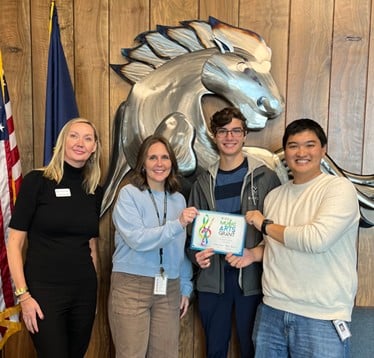
Mountainside High School, Beaverton, Oregon
Blake Kuroiwa, Oregon Education Association Member
Mountainside Band Program
Blake Kuroiwa, Band Instructor, Teacher and Oregon Education Association member, applied with a note stating that the band budget had been reduced by half this year due to cuts. This has reduced the program’s ability to serve students of lower socio-economic status. The funds from the grant will aid those students who wish to participate in marching band, winter guard, or winter percussion.
Dee Dee Templeton, Sr. Account Development Manager working locally in Oregon, presented to Blake along with the Band Booster President, Stephanie Marr. Dee Dee remarked that Blake was excited and thankful to receive the grant. He told Dee Dee that he spends his summer break looking for opportunities to raise funds and to find grants.
Photo L-R: Dee Dee Templeton, California Casualty Sr. Account Development Manager, Stephanie Marr, Band Booster President, Band member, Dani Castaneda, band member and Blake Kuroiwa, Awardee
Jim Phillips – 2024 Music & Arts Grant Awardee Spotlight
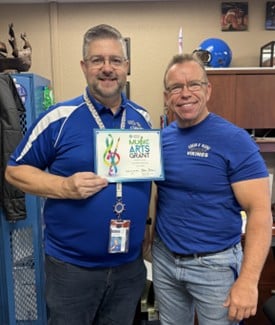
Coeur d’Alene High School, Coeur d’Alene, Idaho
Jim Phillips, Instrumental Music Director and Idaho Education Association Member
Coeur d’Alene High School Orchestra Program
Coeur d’Alene High School receives a Music & Arts Grant to help keep the music going. Located seven hours north of Boise is Coeur d’Alene High School in Coeur d’Alene, Idaho. The area is known for being the playground of the Pacific Northwest because of the many recreational activities. But for the orchestra department at the high school, budget cuts were impacting students’ ability to continuously play.
Jim Phillips, Instrumental Music Director and teacher at Coeur d’Alene High School wrote in his application that the orchestra has not had a budget for about five years. If a string breaks in rehearsal, the instrument and the player are out of commission until a new string can be acquired.
Dee Dee Templeton, Sr. Account Development Manager working locally in Oregon, shared the goods news with Jim about his application being selected for a Music & Arts Grant. Dee Dee shared that Jim was so thankful for the grant award, that being able to have new strings readily available is such a basic need.
Photo L-R: Jim Phillips, Awardee, and Mike Randles, Coeur D’Alene High School Principal
Melanie Tanesco – 2024 Music & Arts Grant Awardee Spotlight

J.C. Crumpton Elementary School, Marina, California
Melanie Tanesco, 1st Grade/Special Education Teacher and California Teachers Association Member
J.C. Crumpton Elementary Saturday Academy – Inclusive Program
Melanie Tanesco, 1st Grade/Special Education Teacher and California Teachers Association member, heard about the California Casualty Music & Arts Grant from her local union newsletter. She knew the J.C. Crumpton Elementary Saturday Academy program would benefit from the grant.
Melanie wrote in her application that the program includes painting, STEAM art challenges and other inclusive programs attended by both general and special education students. “The grant will ensure that all students continue to benefit from these enriching experiences, helping our kids to be creative and embrace their unique talents. Despite potential budget constraints, the focus will be on maintaining the quality and accessibility of our inclusive Saturday Academy to support the diverse needs of our student community and foster a love for creativity and learning.”
Chris Nieto, Account Development Manager located in central California, delivered the good news to Melanie. Chris said that “Melanie was very excited and thankful to be chosen as one of this year’s recipients of the California Casualty Music & Arts Grant. She plans to use the funds for a variety of art projects.”
Photo: Melanie Tanesco, Awardee, and Chris Nieto, Account Development Manager
Brian Mabry – 2024 Music & Arts Grant Awardee Spotlight
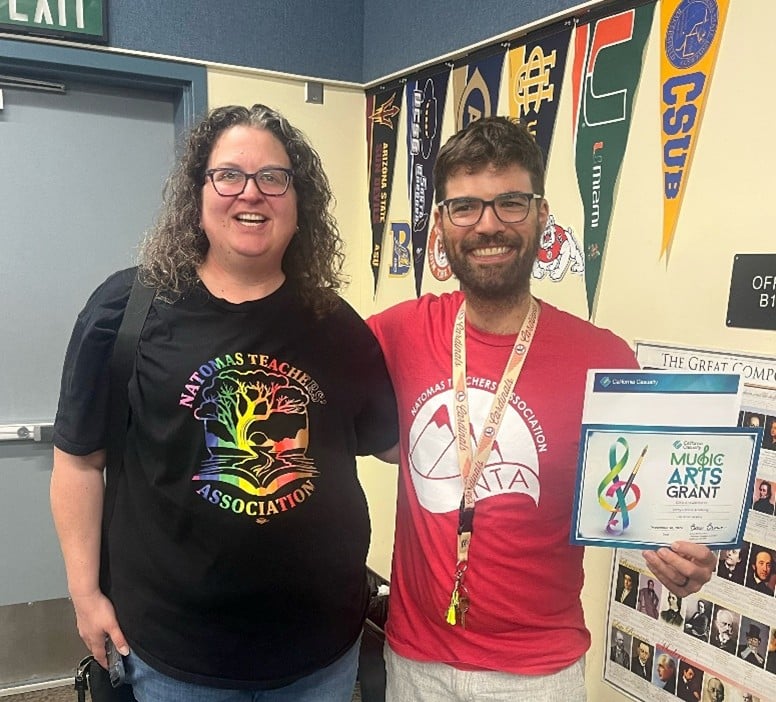
Leroy Greene Academy, Sacramento, California
Brian Mabry, Music Teacher and California Teachers Association Member
Leroy Greene Academy Band
Brian Mabry, Music Teacher at Leroy Greene Academy was in the middle of updating his California Casualty Insurance policy when he was surprised by Amanda Keidel, Account Development Manager covering accounts in northern California, and Mara Harvey, Natomas Teachers’ Association President. They were there to deliver a $250 Music & Arts Grant award to Brian.
In the application, Brian wrote, “the LGA music program has suffered for the past several years due to lack of staffing. Previously it offered classes for junior high and high school students with two different teachers. Last year they could not find a teacher; the music class was transformed into a computer course. In my first year, I started a band program and have almost 200 students.”
Amanda said that Brian was very surprised and thrilled; he plans to purchase sheet music and reeds for his classes.
Photo L-R: Brian Mabry, Awardee and Mara Harvey, Natomas Teachers’ Association President
Rhonda McQuown – 2024 Music & Arts Grant Awardee Spotlight
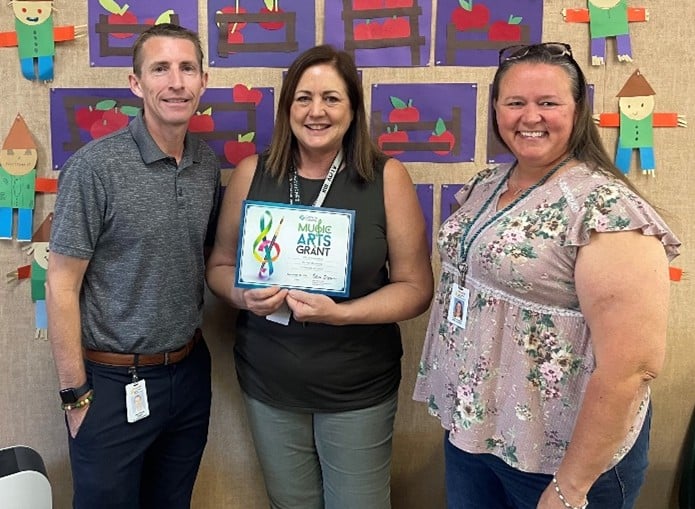
Rio Vista Elementary, Cathedral City, California
Rhonda McQuown, Special Education Teacher and California Teachers Association Member
Special Education – Special Day Class
Rhonda McQuown, Special Education Teacher and California Teachers Association member, was surprised this fall with a $250 Music & Arts Grant from California Casualty.
Rhonda wrote in her application that she was requesting funding to purchase art supplies that are appropriate for her special education classroom of mild/moderate students that have learning disabilities, autism or intellectual disabilities, stating “appropriate art supplies will enhance student enrichment and art experiences.”
Inez Morales, Sr. Account Development Manager, located in southern California, had the pleasure of surprising Rhonda with the grant award. She along with the Principal, Vice Principal of Rio Vista Elementary, the Palm Springs Teachers Association President and fellow colleagues celebrated Rhoda and her students. Inez remarked, “Rhonda helps her students reach their full potential, offering not just academic instruction but also emotional support, advocacy, and life skills development. The way her students interacted with her spoke volumes about how special she is, there were smiles all around that day.”
Photo L-R: Aaron Tarzian, Rio Vista Elementary Principal, Rhonda McQuown, Awardee, Karen Johnson, Palm Springs Teachers Association President
Inez Rowles – 2024 Music & Arts Grant Awardee Spotlight
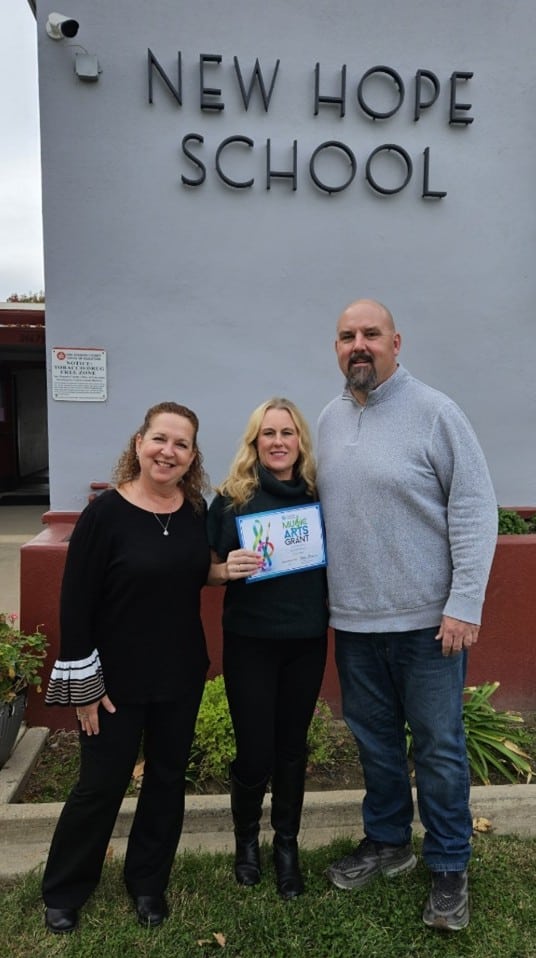
New Hope Elementary, Thornton, California
Inez Rowles, Teacher, New Hope Education Association President and California Teachers Association Member
Art in the Classroom
Inez Rowles, kindergarten teacher, New Hope Education Association President and California Teachers Association Member, at New Hope Elementary heard about the Music & Arts Grant from Angie Rajczyk, Account Development Manager covering accounts in the San Francisco Bay Area. New Hope Elementary is a one-building school district in a very rural area, with limited resources. Inez applied asking to support art education for the students in her classroom.
Angie along with New Hope Elementary Principal, Clint Johnson, presented the grant to Inez. Inez told Angie that ” I am so excited for the grant. I am going to use the funds to purchase portfolios and art supplies for all the students. This will allow them to keep all of their artwork in one place and be able to showcase it at the end of the year.”
Not only is Inez the local president of New Hope Education Association, the Principal, Clint, is an ACSA member!
Photo L-R: Inez Rowles, Awardee, Angie Rajczyk, Account Development Manager and Cliff Johnson, New Hope Elementary Principal
Amy Kirchoff – 2024 Music & Arts Grant Awardee Spotlight
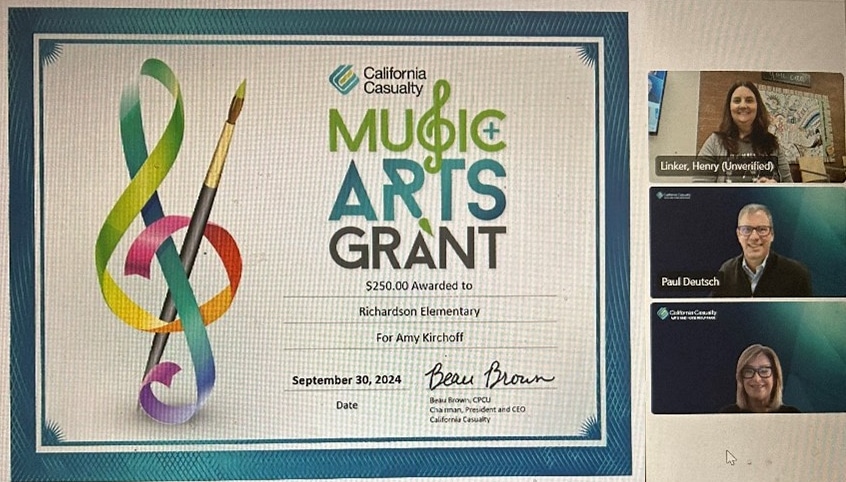
Richardson Elementary School, Tucson, AZ
Amy Kirchoff, Music Teacher and Arizona Education Association Member
Richardson Elementary Music Program
Amy Kirchoff, music teacher and Arizona Education Association member, has felt the pressure of budget cuts. With an idea to broaden her students’ horizons through music she looked to the California Casualty Music & Arts Grant as a solution. Amy wrote if awarded, “the grant money will be used to purchase multicultural instruments, games, and activities for her students.”
On the afternoon of October 30th, Amy was expecting a routine discussion with her school principal, Mr. Linker, to celebrate her recent achievements. He informed Amy that there would be more participants attending the meeting virtually. It was an exciting moment when Jana Charles, Sr. Account Development Manager and Paul Deutsch, Strategic Account Manager presented Amy with the grant, recognizing her hard work and dedication. Jana remarked that Amy’s reaction was priceless, making the surprise even more special.
Photo Top-Bottom: Amy Kirchoff, Awardee, Paul Deutsch, Strategic Account Manager, Jana Charles, Sr. Account Development Manager
The complete list of 2024 Grant recipients are:
- Danielle Yeti,A.M. Winn Elementary School , Sacramento , CA , Electives programs for grades 6-8
- Ashley Martinez , Anna McKenney Intermediate , Marysville , CA , Drama
- Joleen Vincent , Creative Connections Arts Academy High School , Sacramento , CA , Introduction to Art classes
- Joleen Vincent , Creative Connections Arts Academy High School , North Highlands , CA , Visual Arts
- Beth Geise , Hooker Oak Elementary School , Chico , CA , Alzheimers Care
- Brian Mabry , Leroy Greene Academy , Sacramento , CA , LGA Band
- Erica Hung , Riverview STEM Academy , Rancho Cordova , CA , Education through Music
- David Hunter , Bridge Program – Diablo Unified School District , Concord, CA , Visual Arts
- Jessica Gutierrez , James Lick High School , San Jose , CA , James Lick Advanced Art Pathway / Visual Arts Program
- Leslie McNabb , Lone Tree Elementary , Antioch , CA , Classroom
- Angela Ordaz , Mountain View Elementary , Concord , CA , School Counseling
- Inez Rowles , New Hope Elementary , Thornton , CA , Art in my classroom
- Crystal Latonio , Zane Middle School , Eureka , CA , Art Therapy
- Alexa Quezada , El Monte Middle School , Orosi , CA , Art Elective Classroom
- Lindsay Doyle , Fairmont Elementary , Sanger , CA , Art Show
- Melanie Tanseco , JC Crumpton Elementary , Marina , CA , TK – 6th
- Amber Wilkerson , Los Ranchos Elementary School , San Luis Obispo , CA , Special Education Day Classes
- Rebecca Townsend , Rivergold Elementary School , Coarsegold , CA , Classroom
- Janet Washington , Stella Hills Elementary , Bakersfield , CA , Art
- Jim Phillips , Coeur d’Alene High School , Coeur D Alene , ID , Orchestra
- Jessica Johnson , Hawthorne Middle School , Pocatello , ID , Hawthorne Middle School Choirs
- Melissa Syverson , Lewiston High School , Lewiston , ID , Drama Department
- Ainsley Boan , Whitney Elementary School , Boise , ID , Art
- Andrew Thompson , Aloha High School , Aloha , OR , Music Studio Program
- Jennifer Stone , Cedar Park Middle School , Porland , OR , Band
- Blake Kuroiwa , Mountainside High School , Beaverton , OR , Mountainside Band Program
- Brianna Carder , Talmadge Middle School , Independence , OR , Mariachi Program
- Chelice M Gilman , Ella B. Allen Elementary , Bonita , CA , Visual Art
- Lisa Sandberg , Gus Franklin Jr. STEM School , Victorville , CA , Art program
- Carolyn Quirino , La Granada Elementary , Riverside , CA , Art lessons for students through Art Smarts
- Natalee Boggs , Murrieta Mesa High School , Murrieta , CA , Special Education
- Natalee Boggs , Murrieta Mesa High School , Murrieta , CA , Unified Leadership
- David von Behren , Oasis Elementary School , Twentynine Palms , CA , Autism Music and Sculpture
- Rhonda McQuown , Rio Vista Elementary , Cathedral City , CA , Special Day Class
- Jean Tillman , Brookhurst Elementary School , Garden Grove , CA , Kindergarten Students
- Kristen Hellewell , Castille Elementary , Mission Viejo , CA , Special Needs in Music
- Roberto Ontiveros , Century High School , Santa Ana , CA , Century Instrumental Music Program
- Kendall Wightman , Elmhurst Elementary , Ventura , CA , Elementary Art
- Araceli Garcia , Workman High School , City of Industry , CA , ELD Design-Based Learning Summer program
- Jessica Reed , York Elementary , Hawthorne , CA , Painting
- Kirstin Miller , Bear Creek High School , Lakewood , CO , Bear Creek High School Instrumental Music Program
- Kathy Van Wert , Bill Reed Middle School , Loveland , CO , Bill Reed Middle School Band Program
- Molly Curro , Columbian Elementary , Pueblo , CO ,
- Cheryl Malet , Escalante-Biggs Academy , Denver , CO , Art
- Michele Arthur , Jack Swigert Middle School , CO Springs , CO , Art
- Amelia Haug , Maplewood Elementary , Greeley , CO , Music Classes and Choir Program
- Amy Holle , Niwot High School , Niwot , CO , Unified Theater
- Patricia Koed , Platte Valley Middle School , Kersey , CO , PVMS Choir
- Kari Dusenbery , York International , Thornton , CO , Middle/High School art and Design
- Hannah Hurst , Deerfield Elementary , Lawrence , KS , Deerfield Elementary Art Program
- Crystal Plante , Hill City Grade School , Hill City , KS , Art
- Katrina Snow , Paradise Valley Elementary , Casper , WY , Primarily Art-art and music programs works together to create a school-wide art show and performance.
- Lynnsey Patterson , Woods Learning Center , Casper , WY , Art
- Charla Jones , Carol G. Peck School , Glendale , AZ , K-8 art program
- Monika Beauvais Landi , Fulton Elementary School , Chandler , AZ , Fulton Elementary School General Music Program
- Gabriela Carrillo , Mitchell Elementary , Phoenix , AZ , Mitchell’s Art Program
- Christina Ozuna , Park Meadows Elementary , Glendale , AZ , Art
- Marguerite Samples , Pueblo Gardens PreK-8 School , Tucson , AZ , Art
- Graham Corp , Rhodes Jr. High School , Mesa , AZ , Special Education/Band
- Amy Kirchoff , Richardson Elementary , Tucson , AZ , Music
- Monica Tavcar , Sunrise Elementary School , Phoenix , AZ , Sunrise School Art Program
- Judith Arnold , Thomas Elementary School , Flagstaff , AZ , Native American education

by California Casualty | Educators, Helpful Tips |
As a teacher, your to-do list might feel never-ending, with lesson plans, grading, and meetings all competing for your time—on top of the countless ways you support your students. But with a few smart time-management strategies, you can regain control of your schedule, reduce stress, and even find a little breathing room in your day.
We’ve compiled the practical tips to help you streamline tasks, stay organized, and create more balance, so you can focus on what you love most: making a difference in the classroom.
How much time do you actually have?
Let’s start by calculating how much unstructured time you have in your schedule during contracted hours. The easiest way is to conduct a time audit.
- For 3-5 days, record how much time you spend on different activities (e.g. making copies, doing lesson plans, setting up Google classroom, getting coffee, chatting with colleagues).
- Add up the unstructured time you have available daily.
- Then, analyze the results. Where is your time going? What’s taking the most time? Do you want to spend time on these things?
Now let’s figure out how to rearrange tasks to fit more neatly into your schedule.
- Create a list of tasks you do regularly. This can be daily and/or weekly.
- Assign a time estimate to each. If need be, break down larger tasks into smaller, doable chunks to more easily fit into your schedule.
- Categorize each task as creative (lesson planning, writing emails), analytical (grading), logistics (paperwork) and tasks that take less than 15 minutes to complete.
- Mark the priority tasks that must get done.
- Urgent and important – clear deadline and consequences for not acting
- Important – no set deadline but helps you stay on top of things
- Neither – helpful but not necessary, good to do when time allows
Use a planner to map out your week.
- Slot in tasks in available timeslots, starting with the ones you marked as priority.
- When possible, group similar tasks together. Task switching takes more energy and is less productive.
- If any tasks do not fit in the schedule, keep them on a list to do as you have time.
- Consider theming your days to make organization easy, e.g. Monday is administrative work and filing, Tuesday is gathering materials, Wednesday is grading, Thursday is lesson planning, and Friday is photocopy day for the following week’s lessons.
Tips for Better Time Management
Good time management takes practice. Continuously evaluate and adjust your strategies as needed. Here are some additional tips that can help.
- Touch it once. When you pick something up, put it where it goes. Those few extra seconds will save you time in the long run and keep you organized.
- Tackle 2-minute tasks. Completing these small tasks will keep them off your to-do list later.
- Close your door. Anytime you’re without students, keep your classroom door closed to help prevent interruptions. Silence your cell phone and don’t check your email. Set aside time to work on the project at hand.
- Protect your prep. If you have a prep in a shared space, put on your headphones and sit in the least visually distracting spot. Put up a sign above your workspace saying “Easily distracted! I’m happy to catch up later. I promise!”
- Not everything has to be graded. Use a grading matrix like the one below.
|
URGENT |
LESS URGENT |
| IMPORTANT |
Must grade ASAP (course exams, school/county state requirements) |
Must grade when time allows (tests, projects) |
| LESS IMPORTANT |
Students can self-assess using a rubric or grade each other (quizzes) |
Consider not grading (practice, homework, warmups, portfolio pieces) |
- Do the thing you don’t want to do first. Tackling the most challenging or dreaded task early in the day allows you to apply the greatest focus. It also boosts your motivation and makes the rest of your tasks feel easier by comparison
- Leverage tech tools to make your life easier. Try Artificial Intelligence (AI) in lesson planning, creating grading rubrics, and writing notes to parents, among other tasks. Just be cautious if you use AI for grading. That has raised some concerns among parents.
- Get help from your students. Assign your students roles to help maintain the classroom. They can update centers, file papers, and grade each other’s work on simple quizzes like weekly spelling tests. Similarly, you may be able to use parent volunteers to do some of your photocopying if your school policy allows it.
- At the end of each day, write down 3 things you will get done the next morning. That way, you don’t have to think when you walk into class. Prepare your workspace and materials the day before. Similarly, make a list before you leave on Friday for the week ahead.
- Learn to say no. Be selective in taking on additional responsibilities beyond your contractual obligations. Pro Tip: When you want to say no but can’t bring yourself to vocalize it, say “I’ll have to let you know.” Then you may follow up with an email declining the task.
Too much work and too little time
If you’re like many teachers, the workday doesn’t always end when the bell rings. There’s always more you could do—but should you? Decide how much time you’re willing to dedicate outside of school hours and set clear boundaries. Even reclaiming a few hours each week can make a meaningful difference.
- Schedule appointments or commitments at the end of the school day to ensure you leave on time.
- Collaborate with your administrator to prioritize tasks and manage your workload effectively.
- Discuss ways your school can help teachers avoid burnout.
- Prioritize self-care. A well-rested teacher with good work-life balance is a better educator.
At California Casualty, we’re committed to supporting those who inspire and educate the next generation. Happy American Education Week!
This article is furnished by California Casualty, providing auto and home insurance to educators, law enforcement officers, firefighters, and nurses. Get a quote at 1.866.704.8614 or www.calcas.com.

by California Casualty | Educators, Helpful Tips |
In the classroom, every second is an opportunity to learn. That’s where sponge activities come in—quick, engaging learning tasks that soak up spare moments like a sponge, turning downtime into teaching time. Whether it’s a fun brain teaser, a vocabulary challenge, or a quick math drill, these activities keep students engaged and learning, making the most of every moment.
What exactly are sponge activities?
The term was coined by educator Madeline Hunter. She envisioned activities that reviewed previously learned material and provided ways to practice and engage with the content. The best sponge activities are fun and engaging, and don’t seem too academic.
Sponge activities are often confused with brain breaks. Brain breaks offer a break from learning to energize or relax students so they can refocus. Sponge activities are learning activities.
When should you use sponge activities?
- When the lesson finishes earlier than expected
- When the lesson doesn’t pan out and you need to switch gears
- When the Wi-Fi goes out and you don’t have access to your planned lesson
- When you have a few minutes left in class before dismissal or the next activity
- When you want to add a fun element to learning
- When you want to engage students to prevent behavioral management issues during downtime
Engaging & Effective Sponge Activities
Sponge activities do not just happen. They are pre-planned just as any of your lessons. However, once you establish your list of “go to” sponge activities, you can incorporate them at a moment’s notice. Here are some of our favorites.
Language Arts
- Storytelling: Write a story collaboratively with the whole class. Use a ball to toss around. The person with the ball must add one sentence to the story. Record the story so students can later illustrate it.
- Word scramble: Ask students to write down spelling words so that the letters are scrambled. Then, have them switch papers with a classmate and challenge students to unscramble the words. Alternatively, write a multisyllabic word on the board and have students find as many words as possible using a selection of letters from the word.
- Spelling chain: Give the students a word to spell. The challenge is that each student spells just one letter and they must do it in order. The first student says the first letter, the second the second letter, and so on. Any student who gives a wrong letter sits down.
- Advice column: Ask students to write a letter to a character in the book the class is reading. Students could offer advice at a pivotal moment, share their support, or ask questions. This really helps students to engage with the text.
- Vocabulary guess: A volunteer stands at the front of the room with their back to the board. You write a vocabulary word on the board. The student then calls on the class to provide clues so they can guess the word.
- Wordle for kids: Spellie consists of three daily puzzles ranging in difficulty. The easiest level has four letter words that are good for kindergarten to grade 2. The medium and hard versions use five letter words but keep to words that are common to a fourth-grade vocabulary.
Math
- Countdown: Sit students in a circle and ask them to count by 2s, 5s, etc. Make it more difficult by counting backwards or skipping prime numbers.
- Wordy math: Give students an equation and ask them to write a word problem for it.
- Around the world: You will need flashcards with simple math equations. Start with two students and see which one solves it first. The winner plays the next student using a new flash card, and so on, until it travels around the classroom, and everyone gets to play. You can also do this in small groups.
- Problem-solving box: Keep a small box and blank cards available for students. When they have free time, they can write a problem and place it in the box. For your sponge activity, draw a card from the box and challenge the class to solve it.
- Mental math: How fast can students calculate an answer in their head? Can they beat a calculator? Start with easy computations to build confidence and gradually increase difficulty.
- Race the teacher: Challenge your students to complete a math page more quickly than you can. You can even have students create the questions.
Social Studies
- History charades: Have students act out people, situations, and events that occurred during the period you are studying.
- 20 questions: Write down a name, event, or other content from your current unit. Students choose a card and then the class asks them yes/no questions to discover the answer. If the class cannot guess it within 20 questions, the student has successfully stumped them.
- Historic careers: What careers would students have chosen if they grew up in the historic era the class is studying? Ask the students to write down requirements for that job and to create a daily schedule.
- The list of lists: How many states can students name in a minute? 5 minutes? Choose any content that can be shared as a list and challenge students to compile it within a timeframe.
- Advocacy: Ask students to take a stand about a local or state issue. Present both sides of the issue. Have them write an email to their local or state official about their view.
- Four corners: Present students with a statement related to the unit the class is studying. Have students assemble in one of the four classroom corners: strongly agree, agree, disagree or strongly disagree. Then have each group discuss why they felt that way.
Science
- Student teacher: Ask for a volunteer to be the teacher. That student will quiz the class about the lesson. Model first what you are looking for and prepare a rubric with types of questions the student can ask.
- 20 questions: Write down a scientific element, animal/species, or content from the unit the class is studying. Students choose a card and then the class asks them yes/no questions to discover the answer.
- The list of lists: How many elements on the periodic table can students name in a minute? Choose a category and challenge students to list items within that category.
- Brilliant scientist: Ask students to design an experiment that will prove a concept that the class is studying. (For younger students, give them the steps of an experiment and have them put the steps in the right order.)
- Science fiction: Take a scientific concept and have students create a story around it.
- Breakthrough news: Ask students to write a news article on a past scientific discovery (e.g. discovery of gravity).
General
- Last one standing: Have students write down items in a category related to your content area. Then, ask all students to stand. One by one, have students read one item on their list. If that item appears on anyone else’s lists, it must be crossed off. When all items on a student’s list are crossed out, they must sit down. The winner is the last one standing.
- Epic tech: Use Padlet to help students process the lesson. What 3 things did they learn? What 2 questions would they put on a quiz? Or try these other tech tips and tricks from a third-grade teacher.
- Blackboard races: Divide the class into teams. Pose the question and then students race each other to the blackboard to write the answer. Points are awarded for speed and accuracy.
- Music to my ears: Have students free write or draw to different types of music, with prompts based on your content area.
- Study habits: Have students create mnemonics using their own silly sentences to remember a series of terms. They can even create a chant or cheer that the class can practice.
- Homework help: Model the use of AI and how it can help with homework questions. Then, ask the class some questions to ask AI. Discuss when it is appropriate to use, and when it is not.
Do you have a sponge activity that’s not on the list? Share it with your colleagues in the comments below.
This article is furnished by California Casualty, providing auto and home insurance to educators, law enforcement officers, firefighters, and nurses. Get a quote at 1.866.704.8614 or www.calcas.com.
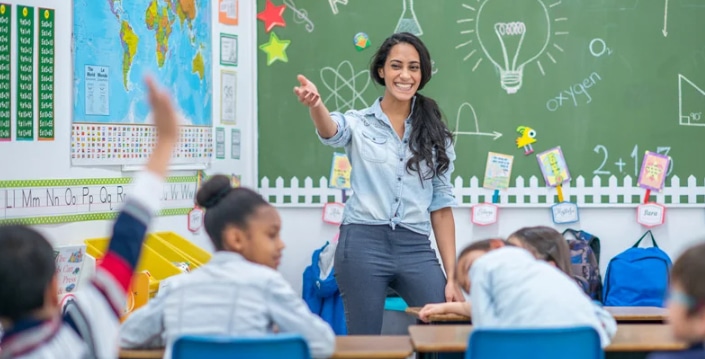
by California Casualty | Educators, Helpful Tips |
Imagine turning your classroom into a hub of creativity and efficiency with just a few clever tweaks. These classroom hacks aren’t just about organizing supplies; they’re about saving time, reducing stress, and making learning more fun for everyone. Ready to unlock the secrets to a smarter, more effective classroom? Let’s dive in!
General hacks
- Painter’s tape: Put painter’s tape on the wall, desks or bulletin boards before attaching Velcro or even using hot glue. It makes it so easy to remove everything when you’re done.
- Shrink-it and laminate: Reduce your schedule and your class list(s) down to a tiny size. Laminate and wear them behind your badge for easy access.
- YouTube edit: Add a dash after the “T” in the YouTube link and you’ll get access to the ad-free version of your videos.
- Rubber band: Fasten a rubber band under the hand sanitizer pump (or any other pump) to limit the amount that comes out. You can adjust the placement as needed.
Organization and storage
- Backpack hooks: Get those backpacks off the floor with hooks that fasten right on the back of students’ chairs. The extra wall space and maneuverability will make your classroom seem larger.
- Magazine racks: Organize papers in magazine racks or file boxes. Label them so you know which is which. This way, they’re also easy for students to access as needed.
- Hanging shoe rack: These are perfect to store supplies, from multiples (like headphones) to basics (scissors, tape and more). Get one with clear pockets so you can easily see what’s inside. Pro-tip: Keep one slot for errant marker tops that could then be used for markers suddenly missing tops.
- Shower curtain rod: Once you set up this rod, you can use hangers with clothespins to hold plastic packets with papers.
Classroom management
- Coloring tablecloths or murals: Allow students to color when they finish work early or while awaiting transitions.
- Tap lights: Place the lights next to the descriptions of classroom noise levels (e.g. playground voice, table talk, whisper, and no voice). Then tap the light corresponding to the appropriate level. For a fun alternative, try this website to alert students when they’re too loud.
- Mystery rewards: Write down a series of rewards, such as extended recess or no homework. Then cover those rewards with Post-it notes. Write a desired behavior on the Post-it, such as lining up quietly. When students do it successfully, remove the Post-it to reveal the reward.
- Mirror: Hang a full-length mirror horizontally and at an angle above the white board, smart board, or blackboard in your classroom. This works as a rear-view mirror so you can see student behavior while you’re facing away. Pro tip: One teacher uses extra-large binder clips to attach to mirror corners, then runs a cord through the black part between the clip and mirror for a no-tools way to secure the mirror.
- Quiet spray: Fill a spray bottle with water. Colorfully and clearly label it “quiet spray.” When you need the class to settle down, spray the mist in the air. You will automatically grab student attention and generate lots of smiles.
Arts and crafts
- Soap dispensers: Store paint in old, clean soap dispensers so students can pump to get the paint.
- Salt shakers: Fill salt shakers with glitter for an easy way to dispense. Pepper shakers will work too but they have fewer holes.
- Laundry drying rack: These racks are perfect for drying student artwork overnight, without taking up that coveted counter space.
- Duct tape marker caps: Take a box of new markers and duct tape the caps together in a set. That way, students can pull out the markers, use them and replace them in the set. It’s an easy way to make sure none are missing.
Small groups
- Stadium seating: These seats have backs, which make sitting on the floor comfortable. Students love them and they are perfect for small group work when you don’t have an extra table and chairs.
- Rolling carts: Long the domain of traveling teachers, rolling carts are wonderful self-contained storage units. Use them to store the essential supplies, from books to manipulatives, for small group work.
- Dry-erase clipboards: These eliminate the need for a desk and can be used again and again. For a tip on storage and erasers for these markers, see the next section. Pro Tip: Not enough white boards to go around? Use a plastic plate. You’d be surprised at how well it works.
- Number assignments: If you have a Chromebook cart, assign each student a laptop number for the year. Make sure there’s a corresponding number on the cart. That way, you can easily track that the Chromebooks are returned and plugged in to charge.
Independent work
- Socks and pom-poms: Use old socks to store dry erase markers. The socks also make great erasers. Alternatively, glue pom poms at the end of dry erase markers for automatic erasers.
- Dry erase pockets: Place worksheets in dry erase pockets so students can work on problems again and again.
- Silverware tray: Get an inexpensive silverware tray and use it to organize writing utensils in your writing center.
- Highlighter basket: Place a basket of highlighters by the place where students turn in work. Have them highlight their name before they place their paper in the bin. This helps reduce no-name papers.
Check out our blog on Design Tips for more ideas of how to organize your classroom. Our Welcome Back to School blog offers tips on the first 10 days of prep and plans.
Do you have a classroom hack that’s not on the list? Share it with your fellow educators in the comments.
This article is furnished by California Casualty, providing auto and home insurance to educators, law enforcement officers, firefighters, and nurses. Get a quote at 1.866.704.8614 or www.calcas.com.
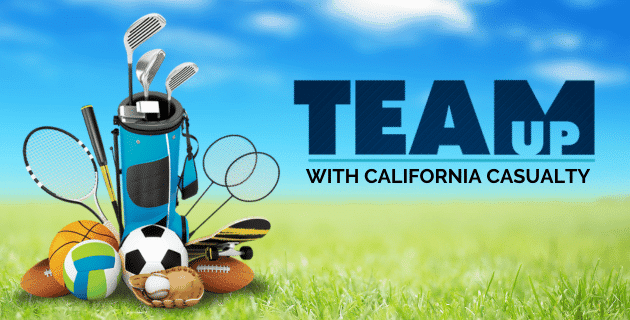
by California Casualty | Educators, Press Releases |
California Casualty has delivered $1,000 Thomas R. Brown Athletic Grants to educators at 13 public middle and high schools across seven states to help support their school sports program(s). Since its inception in 2010, the Thomas R. Brown Athletics Grant Program has helped fund burdened athletic programs in 763 public schools across the nation.
Named in honor of Tom Brown, an ardent sports enthusiast and California Casualty Chairman Emeritus, the Thomas R. Brown Athletic Grant reflects his conviction that the values cultivated on the field—such as teamwork, trust, communication, and confidence—extend far beyond sports, enriching academic and personal development. Athletic programs play a pivotal role in shaping students’ character, fostering well-rounded individuals who excel both in the classroom and in life.
“The athletic departments mission is to provide our students who come from an underserved community the opportunity to develop sport skills by maximizing participation and focusing on fundamental skills. El Camino Jr. High School sports focus on developing positive values, learning sportsmanship, teamwork, communication and cooperation. This grant will go towards purchasing equipment such as volleyballs, basketball, ball racks and nets…. to enhance the lives of our student athletes,” said CTA Member and applicant Ashley Sandoval.
California Casualty recognizes the vital role of youth sports in promoting children’s physical and mental well-being. We are delighted to announce that the 2023/2024 Athletic Grants will support the following initiatives:
-
- Angevine Middle School, Lafayette, CO – Basketball, Flag Football, Soccer and Track
- Burley High School, Burley, ID – Wrestling
- Challenger Middle School, Tucson, AZ – Boys and Girls Soccer
- CY Middle School, Casper, WY – Boys Soccer
- Del Campo High School, Fair Oaks, CA – Girls Flag Football
- Del Mar High School, San Jose, CA – Football
- El Camino Jr High, Santa Maria, CA – Basketball and Volleyball
- Hillsboro High School, Hillsboro, OR – Cheerleading
- Montebello High School, Montebello, CA – Girls Golf
- Scappoose High School, Scappoose, OR – Bowling
- Shadow Hills High School, Indio, CA – Boys and Girls Soccer
- Syringa Middle School, Caldwell, ID – Boys Basketball
- Turner High School, Kansas City, KS – Boys and Girls Golf
Congratulations to all of our 2023/2024 grant recipients!
Angevine Middle School, Lafayette, CO
Scappoose High School, Scappoose, OR
Hillsboro High School, Hillsboro, OR – Cheerleading
Shadow Hills High School, Indio, CA
Del Mar High School, San Jose, CA
Burley High School, Burley, ID
El Camino Jr High, Santa Maria, CA
Del Campo High School, Fair Oaks, CA
Montebello High School, Montebello, CA
Turner High School, Kansas City, KS

















